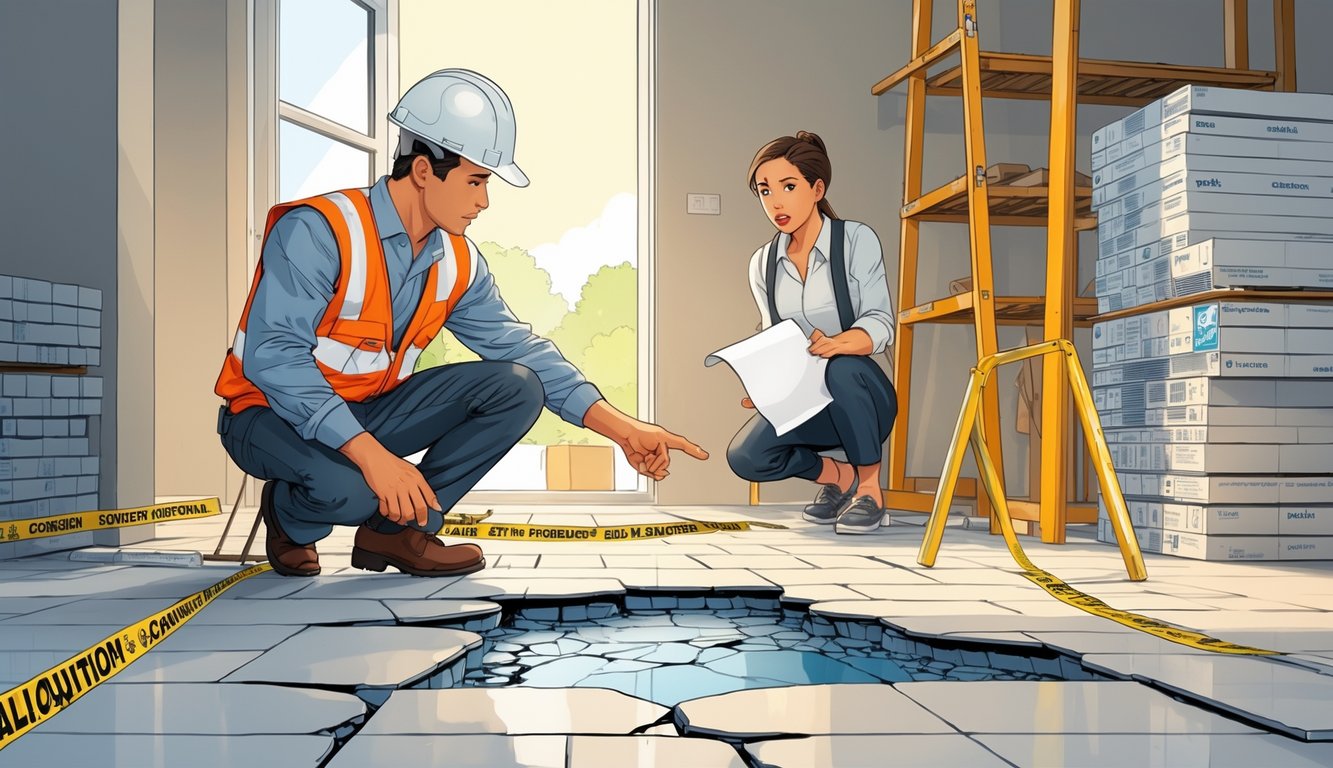
Labor and Material Costs Breakdown
What really drives me nuts? One day tile’s $2.50 a square foot, next week, same SKU, it’s $3.75. Hard numbers matter, not just gut feelings, so let’s get real about where things get expensive or slip through the cracks—a broken invoice never lies, but it barely tells the story.
Tracking Labor Costs Throughout the Project
First tile bid I ever saw—felt like a math prank. Everyone fudged numbers. Labor trips up most homeowners; they squint at the quote, but crews get paid hourly, and tile layouts eat hours when subfloor repair, water barriers, or tricky cuts pop up. Rates keep rising—2024 BLS says tile setters up 6% year-over-year, but the real killer is overtime. Two days off schedule? Payroll balloons, but nobody flags it until the change order lands.
Sub quotes hide behind lump sums (“Includes labor and all,” says the invoice, but who asks enough questions?). I’m still amazed how few people track labor weekly. If you don’t break down time by room or install type (backsplash vs. large format floor, whatever), you just eat the overages. My last kitchen job, labor was 37% over the estimate—nobody noticed until the grout was dry.
Identifying Key Material Cost Drivers
Thinset, grout, backer board, trim—these look like small potatoes but add up fast, so I keep a spreadsheet mid-project because receipts alone never catch the price jumps. Material prices aren’t just about the tile; shipping surcharges, local taxes, import tariffs (Porcelain from Spain? Over 28% pricier than domestic, says a 2024 analysis), and even fuel for delivery trucks all pile onto the final bill. Worst is when a manufacturer drops a tile mid-job—replacement rarely matches, aesthetically or financially.
People think “allowances” cover the worst—nope, almost never true. Allowances are always low to make the bid look good. If you pick high-gloss marble over basic ceramic, labor jumps ($6.50/hr more, last job), plus sealing, plus adhesives that cost double. Weirdest thing? Prices spiked 13% in three weeks after a regional warehouse fire. Nobody budgets for disaster, but everyone pays for it in the end.
Penalties and Fines Linked to Pricing
So, yeah, the latest price hike email just landed and—surprise—my first thought is, “Did we mess up a regulation again? How much is this one gonna sting?” Contractors talk about penalties like they’re some urban legend, but everyone’s quietly panicking. I swear, somewhere, someone’s spreadsheet just had a meltdown over a $2 million tile bid that tripped a compliance audit. Last month, I got two federal warnings about price documentation. It’s almost like everyone’s waiting for a fine to drop before the actual invoice.
Understanding Fines for Breach of Contract
Here’s what really bugs me: you can’t just blame the supply chain and hope the fines vanish. Especially when you’re dealing with Federal Acquisition Regulation (FAR) 31.205-15—if you’ve seen a contract, you know the legalese is thicker than grout in a bad install. My buddy, total pro, hates paperwork—forgot to update a supplier cost sheet once, bam, five-figure unallowable charge. These fines? They pile up. Sometimes it’s just a flat fee, but other times they compound daily or get tossed into the “unallowable” pile, and then you’re eating those costs because clients and the feds won’t pay a penny extra.
Some contracts, you even sneeze wrong and the penalty clause activates. “Mischarging costs” sounds like a joke until it drains your project margin. Retroactive penalties are the worst—auditors decide you broke a rule and suddenly you owe money for savings you didn’t even realize you claimed. It’s wild.
How Price Spikes Trigger Penalties
Procurement always loses it when tile prices jump overnight—like, ceramic tile wholesale goes up 18% and suddenly everyone’s scrambling. It’s more than a headache; it’s a contractual minefield. Especially with government contracts over $2 million, where you need pricing data that’s current, accurate, and complete—or you’ll get whacked with a price reduction and penalty. Truth in Negotiations Act, latest 2024 update, if you care. (I actually bookmarked the National Law Review summary. Don’t judge.)
And nobody, literally nobody, budgets for “penalties due to price spikes,” but everyone’s been burned. Sometimes you follow every rule and still get nailed for “defective pricing” because a supplier backdated an invoice or picked the wrong index. They don’t care. Miss documenting a tile order before tariffs? Refunds, damages, maybe even suspension. Fun.
I know at least two estimators who keep a “just-in-case-fine” fund. Contracts let agencies claw back any overpayment from bad pricing data, so yeah, I document everything—texts, emails, napkin math. And I still stress when an auditor shows up asking about some $19 grout line item I forgot even existed.